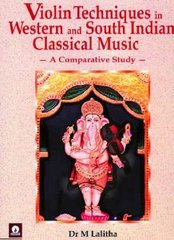Bowing styles compared
THEIR SMILES said it all. “After a hectic season of music, it is rewarding to get recognised, and that too from two of the time-honoured sabhas in Chennai,” say violinists M. Lalitha and M. Nandini, after receiving the Best Senior Violinist Award at the Music Academy and Indian Fine Arts this year.
“Given the fact that violin is considered more as an accompanying instrument, the award from the sabhas for the solo slots was indeed a treasure,” say the sisters.
And why not? With Lalitha’s research on the instruments’ versatility offered in terms of handling the instrument in both Western and Carnatic, surely the two musicians would be enthusiastic about showcasing the melody in it, the best way.
Based on Lalitha’s Ph. D. thesis at the University of Madras, her recently released book, `Violin Techniques in Western and South Indian Classical Music – A Comparative Study,’ attempts at demystifying some of the common approaches and their distinct characteristics.
How similar styles executed differently lend themselves to music, forms the crux of the comparative violin study.
Interesting information makes up for the seven chapters of the book (brought out by Sundeep Prakashan) that has a Kamala Vinayakar with a violin conceptualised by Lalitha’s mother on the cover, with a foreword by Dr. David Reck, Ethno Musicologist of Amherst College, U.S.
Painstaking details of various methods in the use of the bow and fingers to achieve a multitude of aural effects and timbres in both Western and Carnatic classical traditions have been brought out by Lalitha.
“It grows beyond the sahitya, swara and tana vil that is too basic, and enumerates a comprehensive study of different schools for mirroring the two systems,” says Lalitha.
It is for only the techniques incorporated in the book that I met top musicians, musicologists and vidwans in both the genres, she says. “In the chapter on styles, for instance, 500 Western violinists, teachers and schools of play are codified.
And for the comparative study of South Indian equivalents, 240 violinists are discussed and detailed in the list. Adds Lalitha, “Semmangudi Srinivasa Iyer’s account of the several accompanying artistes and their parampara that he had observed in his long-spanning career provides for some interesting read.
As the violin sisters belong to the illustrious family of V. Lakshminarayana, and the trio-violin maestros L. Vaidyanathan, L. Subramaniam and L. Shankar, Lalitha has traced the sishya parampara in the family tree in the book, which draws its lineage to the respected Trinity.
RANJANI GOVIND
Date:01/04/2005 URL:http://www.thehindu.com/thehindu/fr/2005/04/01/stories/2005040101920600.htm
